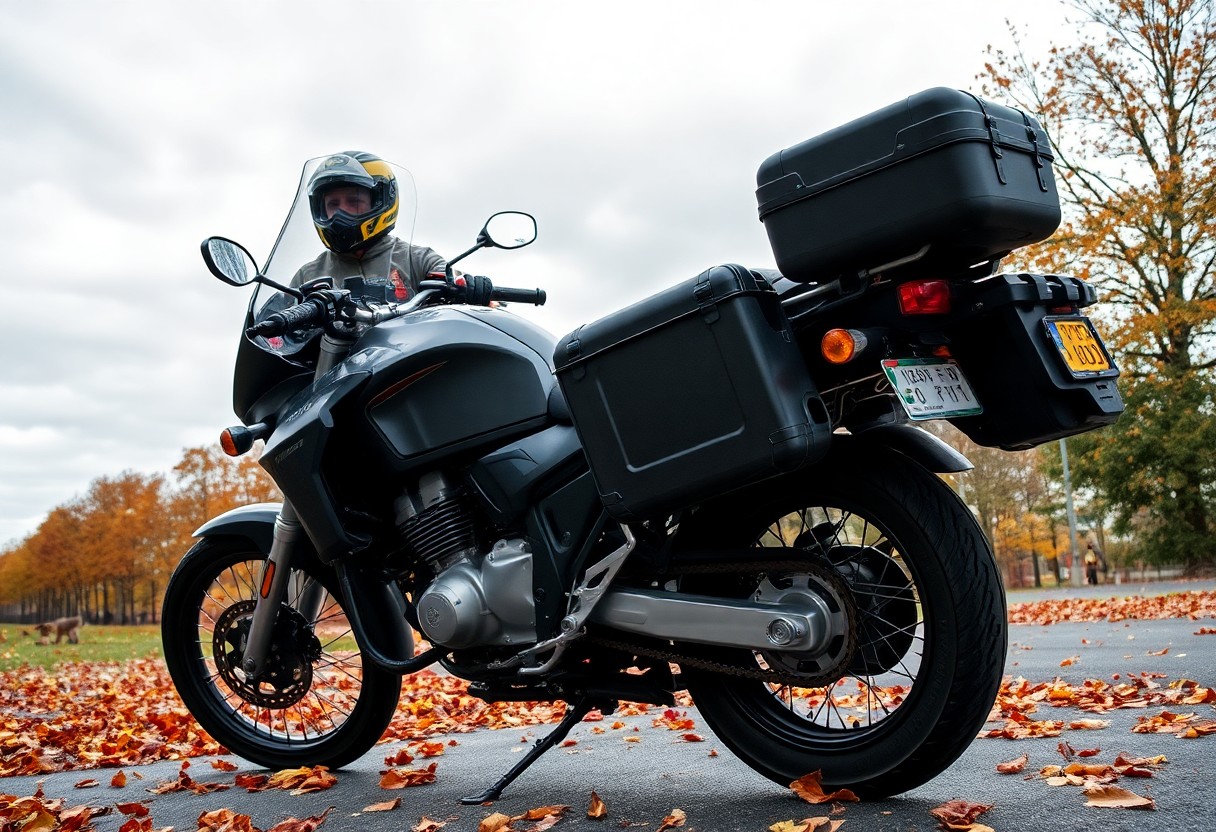Riders face unique challenges on the road, making safety a top priority for both new and seasoned motorcyclists. Whether you’re just starting your journey or have years of experience, understanding the best practices for motorcycle safety is crucial. This guide will provide you with key insights and strategies to enhance your riding experience, ensuring that you are well-equipped to navigate the roads safely. By adopting these practices, you can significantly reduce risks and improve your overall riding enjoyment.
The Importance of Motorcycle Safety
While riding a motorcycle can be an exhilarating experience, understanding motorcycle safety is vital to protecting yourself and others on the road. Emphasizing safety measures helps to minimize risks and enhances your overall riding experience. This awareness contributes to a culture of responsible riding that not only safeguards your life but also promotes safer roads for everyone.
Statistics on Motorcycle Accidents
Importance of knowing the statistics surrounding motorcycle accidents cannot be overstated. Reports indicate higher accident rates for motorcyclists compared to other vehicle users. Understanding the numbers can help you make informed decisions and recognize the potential dangers of riding.
Understanding Common Risks
Accidents are often the result of common risks associated with motorcycle riding, which can include factors like road conditions, impaired visibility, and the behavior of other drivers. Awareness of these risks will help you to prepare better and react accordingly when faced with unexpected situations on the road.
In fact, many accidents stem from factors such as reckless driving, changing lanes without signals, and sudden stops. It’s critical that you stay vigilant and anticipate the actions of other road users. Additionally, wearing proper gear and maintaining your motorcycle can significantly reduce your risk. By recognizing and mitigating these threats, you can enhance your safety and enjoy a more secure ride.
Essential Safety Gear for Riders
There’s no denying that having the right safety gear can significantly enhance your riding experience. From providing protection against the elements to reducing the risk of injury in case of an accident, investing in quality gear is vital for both new and experienced riders. Always prioritize your safety by equipping yourself with the following vital items before hitting the road.
Helmets and Head Protection
Below are some key factors to consider when selecting a helmet for your rides. Picking a helmet that meets safety ratings, is comfortable, and fits securely can massively reduce the risk of head injuries. Choose a full-face model for maximum protection, as it covers your entire head and face. Even as an experienced rider, never underestimate the importance of a high-quality helmet—it’s your first line of defense.
Protective Clothing and Accessories
Essential protective clothing and accessories play a vital role in safeguarding your body while riding. From jackets, gloves, and pants made of durable materials to boots that offer ankle protection, every piece contributes to your overall safety. Quality gear features armor at key impact areas, allowing you to ride with confidence and protection in adverse situations.
Protection from abrasions and impacts is crucial when choosing your riding attire. Look for materials like leather or reinforced textile that provide durability and wear resistance. Many options also come with moisture-wicking properties, ensuring comfort during long rides. Don’t overlook the importance of gloves; they not only protect your hands but also grant you better grip and control. Lastly, investing in high-visibility colors or reflective elements enhances your visibility to other road users, adding an extra layer of safety.
Safe Riding Practices
Now that you have your motorcycle and gear, it’s vital to adopt safe riding practices. Regularly check your bike’s mechanical condition, adhere to traffic rules, and maintain a safe following distance to avoid accidents. Practice riding in varied conditions and avoid distractions such as mobile phones. Being proactive in your riding habits will enhance your safety on the road.
Defensive Riding Techniques
To ensure your safety, utilize defensive riding techniques that help you anticipate potential hazards. Always stay alert to your surroundings, maintain a comfortable distance from other vehicles, and be prepared for sudden stops or maneuvers. By actively assessing the road and the behavior of drivers around you, you can take the necessary precautions to avoid accidents.
Importance of Visibility and Signal Use
The likelihood of staying safe on the road increases significantly when you prioritize visibility and proper signaling. Always wear bright clothing and keep your headlights on, even during the day. Use hand signals or turn indicators to clearly communicate your intentions to other road users.
Consequently, enhancing your visibility and ensuring you signal effectively can help prevent accidents and promote a safer riding environment. When other drivers can see you and understand your movements, they are less likely to make sudden decisions that could endanger you. Make it a habit to check your position on the road and signal consistently, enhancing your overall safety while riding.
Handling Weather and Road Conditions
Many riders overlook the impact of weather and road conditions on their safety and performance. Adapting your riding style and remaining vigilant can significantly reduce risks. Whether it’s rain, fog, or debris on the road, understanding how to manage these challenges enhances your riding experience and keeps you safer on two wheels.
Riding in Rain and Poor Visibility
Poor visibility and wet surfaces demand your full attention when riding a motorcycle. Reduce your speed, increase following distance, and use your headlights to make yourself more visible. Stay alert for slippery spots, especially on painted lines and metal surfaces, as they can be hazardous when wet.
Navigating Gravel and Uneven Terrain
Behind the wheel, navigating gravel and uneven terrain poses unique challenges that require composure and control. Stay relaxed and maintain a steady throttle while keeping your body indexed towards the bike to prevent it from slipping. Smooth, gradual movements with your handlebars help maintain balance, and always look ahead to foresee obstacles.
To improve your skills on gravel and uneven surfaces, practice is imperative. Seek out specifically designed terrains that mimic challenging conditions, allowing you to build confidence without unnecessary risks. Focus on your body position; keep your weight low and centered, adjusting your stance as needed. Anticipate the bike’s movements and allow it to flow, rather than resisting. This natural adaptability will serve you well in various situations, boosting your overall safety and control.
Maintenance and Pre-Ride Checks
Keep your motorcycle in top condition through regular maintenance and thorough pre-ride checks. By taking the time to care for your bike, you ensure not only its longevity but also your safety on the road. Regular inspections can prevent mechanical failures and enhance your riding experience, ultimately allowing you to focus on enjoying the ride.
Essential Motorcycle Maintenance
To keep your motorcycle performing optimally, you should prioritize regular maintenance tasks such as oil changes, tire inspections, and brake checks. Inspecting and servicing your motorcycle components will enhance performance, reliability, and safety while riding. Develop a maintenance schedule tailored to your bike’s needs and adhere to it diligently.
Pre-Ride Safety Checks
For a safe ride, performing pre-ride safety checks is an crucial step. This routine ensures your motorcycle is ready for the journey ahead and helps you identify any potential issues before hitting the road. A few fundamental checks can make all the difference in maintaining a safe riding experience.
In fact, before each ride, take a moment to check the crucials: inspect your tires for proper inflation and tread, verify your brakes are functioning well, and ensure your lights and signals are operational. Also, don’t forget to check your fluids—engine oil, coolant, and brake fluid— to confirm they are at appropriate levels. By integrating these checks into your routine, you significantly lower the risk of breakdowns or accidents, allowing you to ride with confidence and peace of mind.
The Role of Rider Training and Education
Once again, rider training and education are vital components of motorcycle safety. Engaging in comprehensive training not only enhances your riding skills but also builds confidence in your abilities. Whether you are a new rider or someone with experience seeking to improve, professional training helps you understand the dynamics of motorcycle handling, emergency techniques, and the importance of awareness on the road. Investing time in rider education ultimately contributes to safer riding practices and a more enjoyable motorcycling experience.
Benefits of Rider Courses
By enrolling in a rider course, you gain access to expert knowledge and hands-on experience tailored to enhance your riding proficiency. These courses typically cover imperative motorcycle maintenance, safety gear, and road etiquette. You will also learn effective techniques to manage challenging riding situations. With structured training, you can identify your strengths and focus on areas needing improvement, ensuring a comprehensive learning experience.
Advanced Skills for Experienced Riders
Courses designed for experienced riders aim to refine your existing skills and introduce advanced techniques to improve safety and performance. Training focuses on aspects such as advanced cornering, emergency braking, and obstacle avoidance, all of which are imperative for handling unpredictable road scenarios. Building on your foundation, these courses offer specialized skills that can significantly enhance your riding capabilities.
Advanced Skills Training Content
| Topics | Description |
| Cornering Techniques | Learn how to handle curves and turns effectively and safely. |
| Emergency Braking | Understand the best practices for stopping quickly in various scenarios. |
| Obstacle Avoidance | Master techniques to maneuver around unexpected road hazards. |
| Situational Awareness | Develop skills to anticipate and react to changing road conditions. |
Benefits of advanced training extend far beyond just the techniques learned. You enhance your ability to make informed decisions on the road, leading to greater safety for you and others. Through additional training, you also gain insight into your riding style, allowing you to identify areas for improvement. You will create more enjoyable rides with increased confidence and skills in complex situations.
Benefits of Advanced Skills Training
| Benefits | Description |
| Improved Confidence | Feel more secure in handling your motorcycle in diverse conditions. |
| Enhanced Safety | Reduce the likelihood of accidents with effective techniques. |
| Better Control | Gain better command over your motorcycle’s dynamics. |
| Long-term Skills Development | Continue refining your abilities throughout your riding journey. |
Conclusion
Presently, embracing motorcycle safety is vital for both new and experienced riders. By implementing best practices such as wearing appropriate gear, staying alert, and maintaining your motorcycle, you ensure not only your safety but also the safety of others on the road. Continuous education and awareness of your surroundings will empower you to navigate different riding conditions confidently. Ultimately, your commitment to safety will enhance not only your riding experience but also your overall enjoyment of motorcycling.


